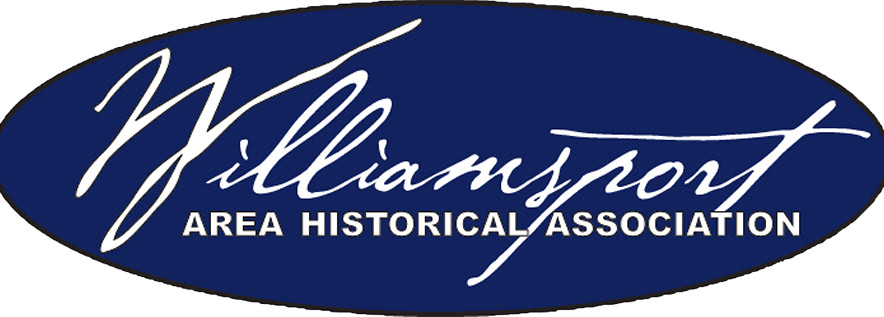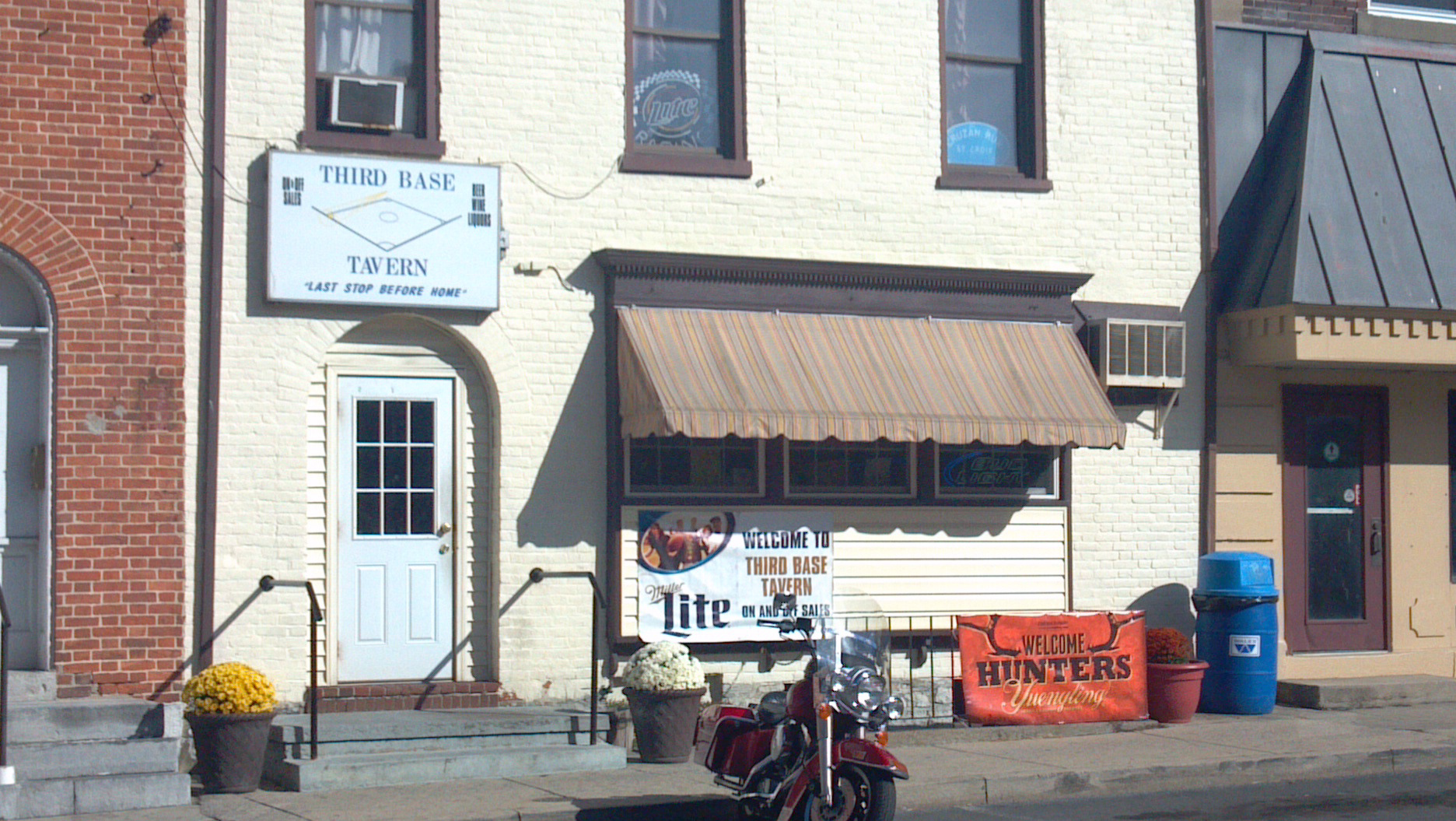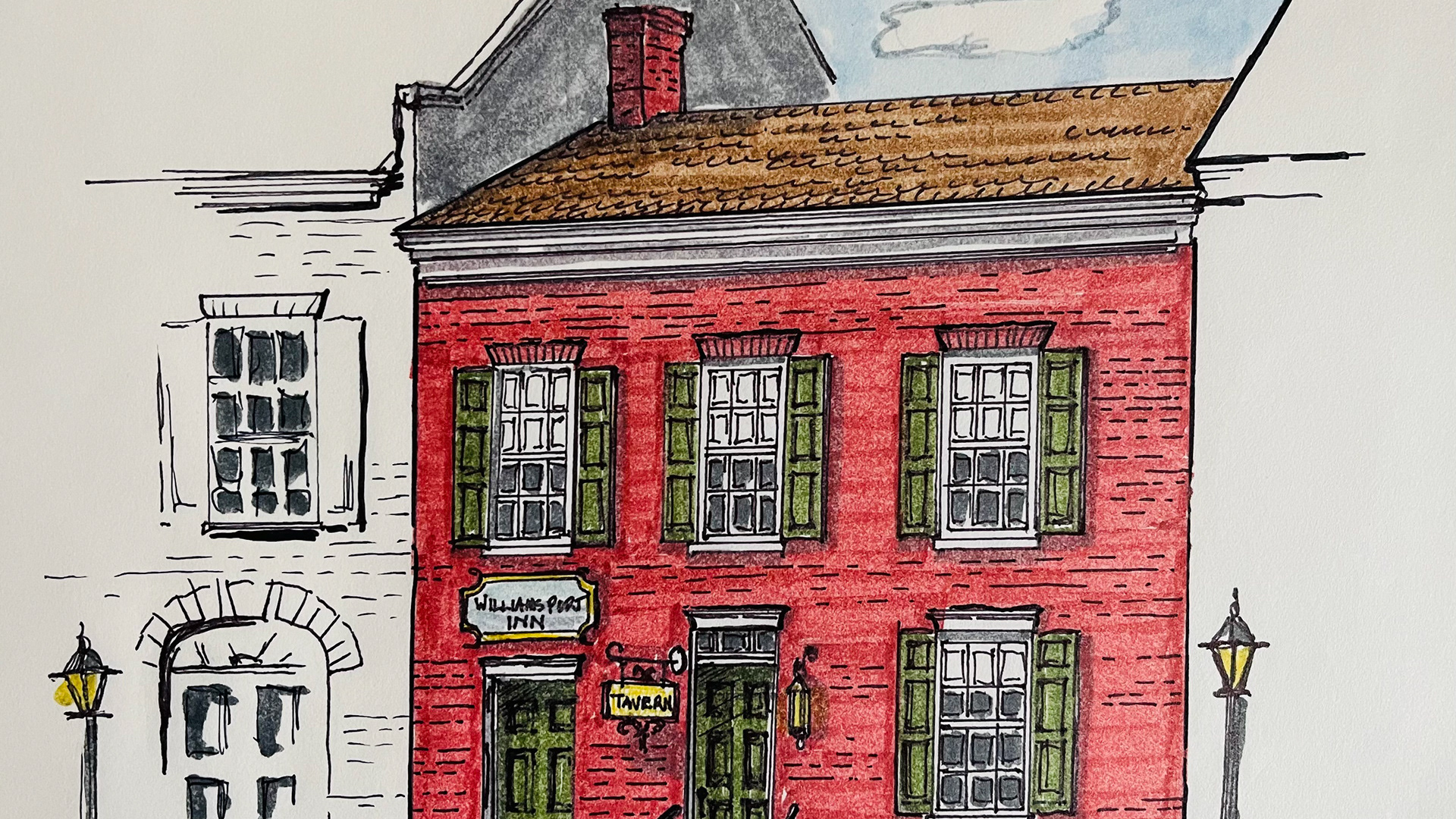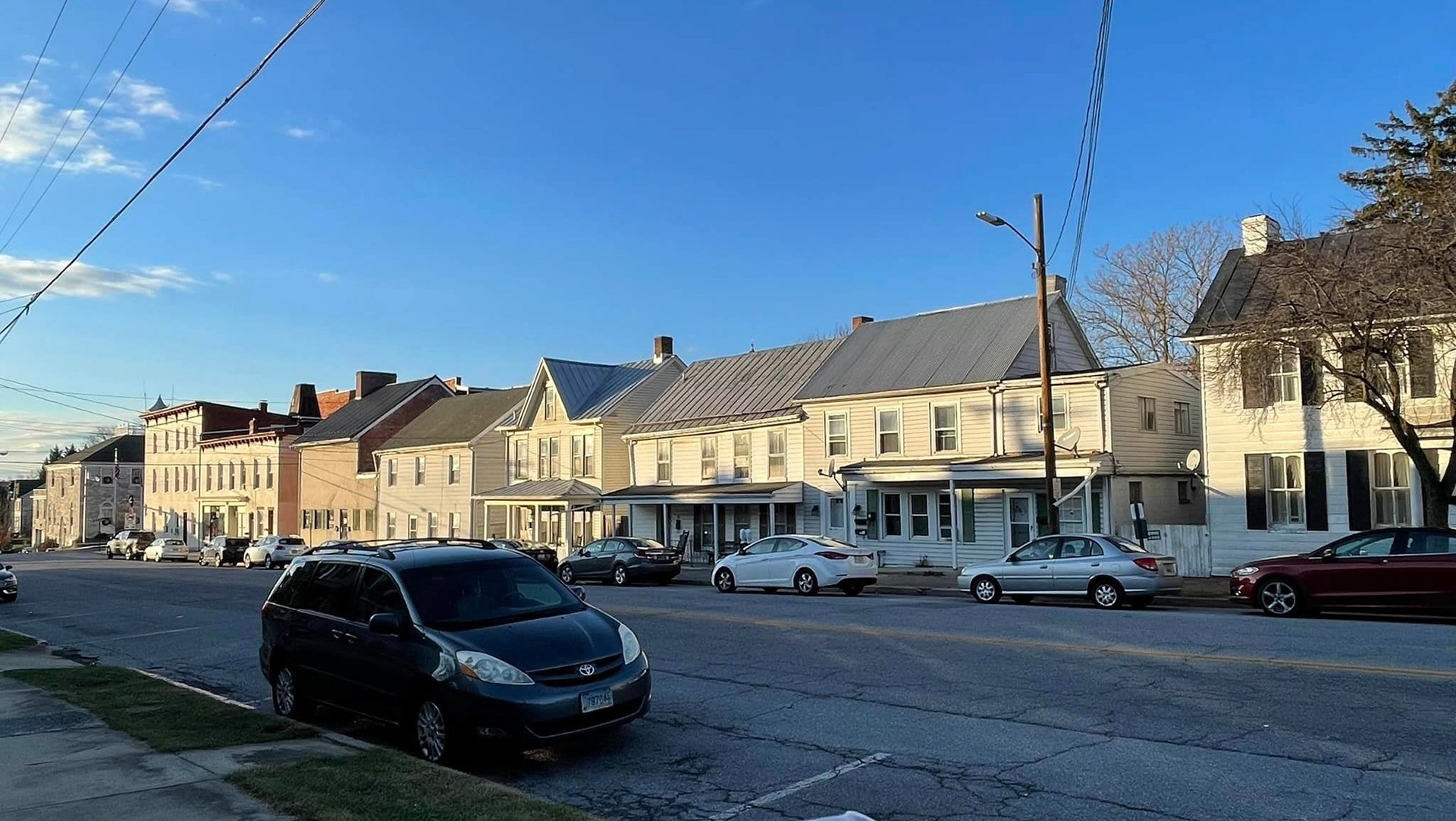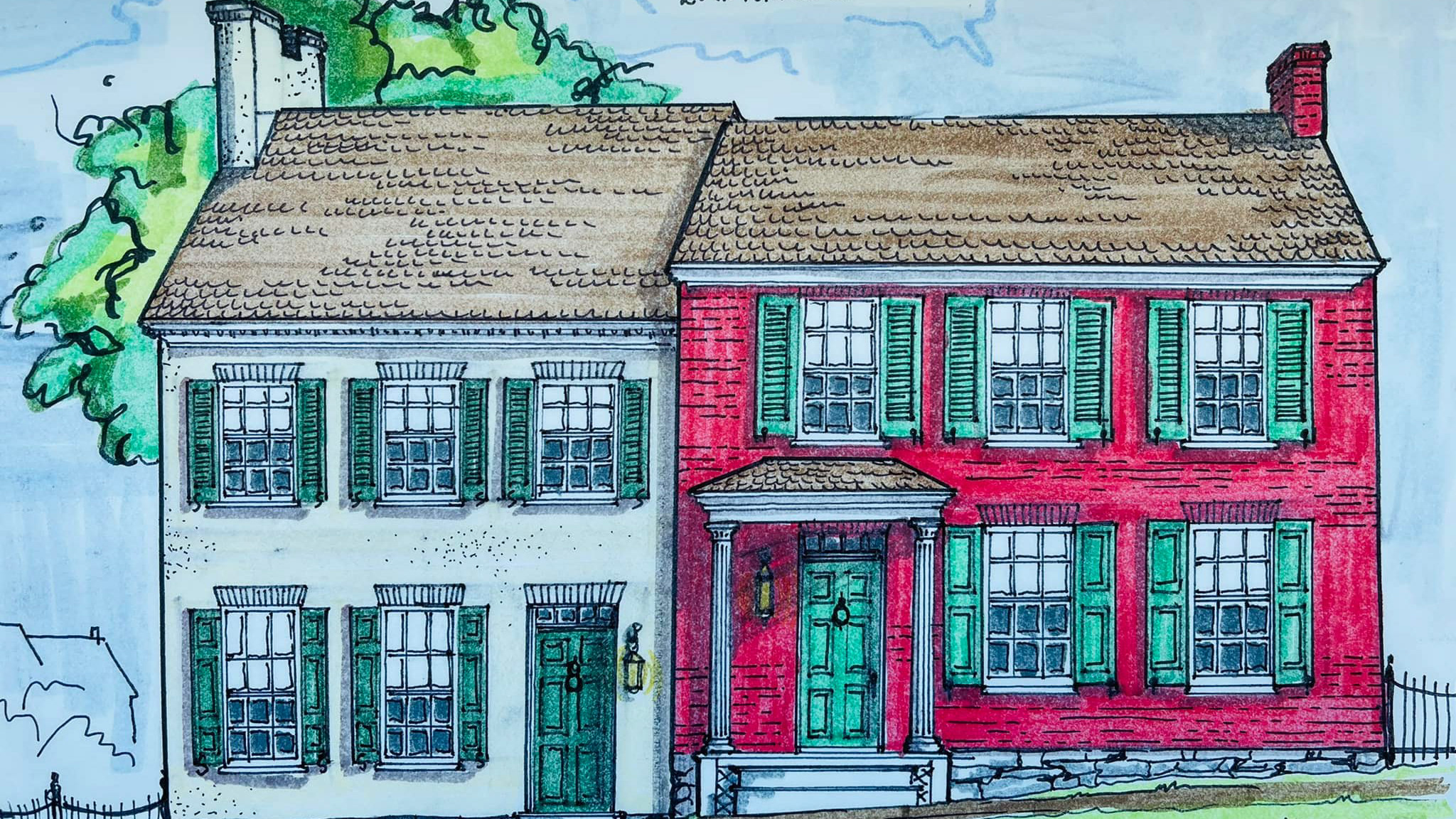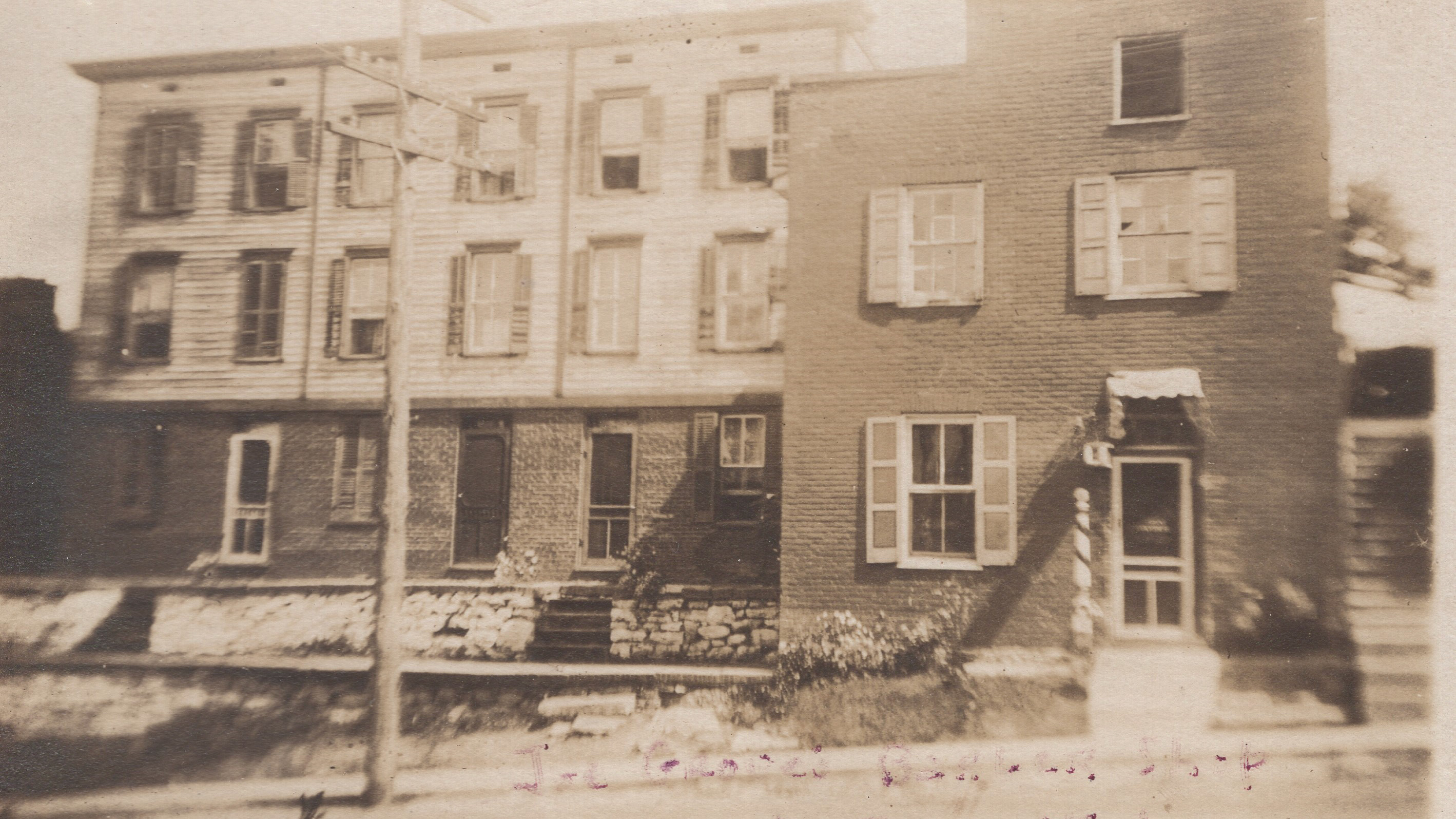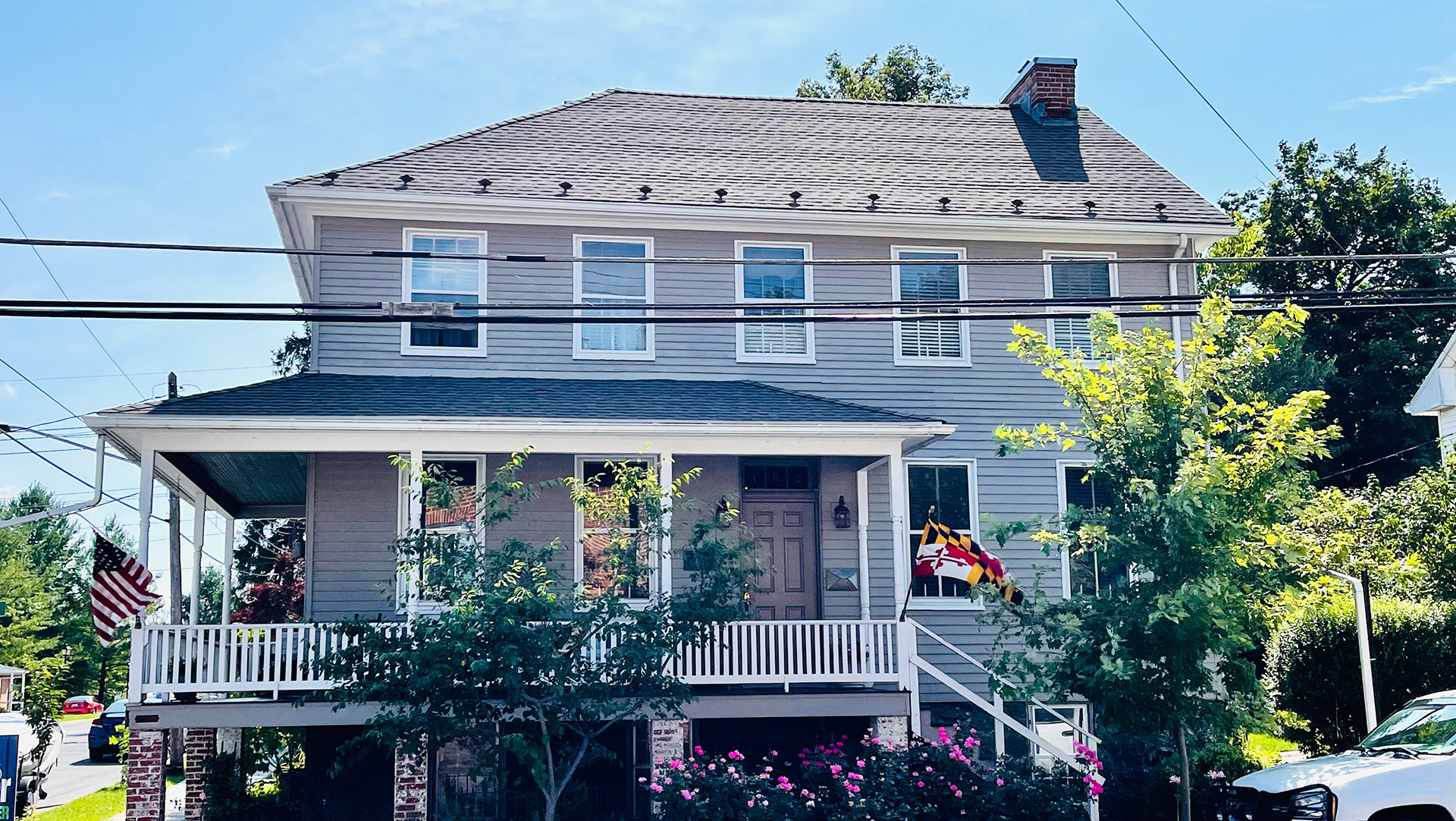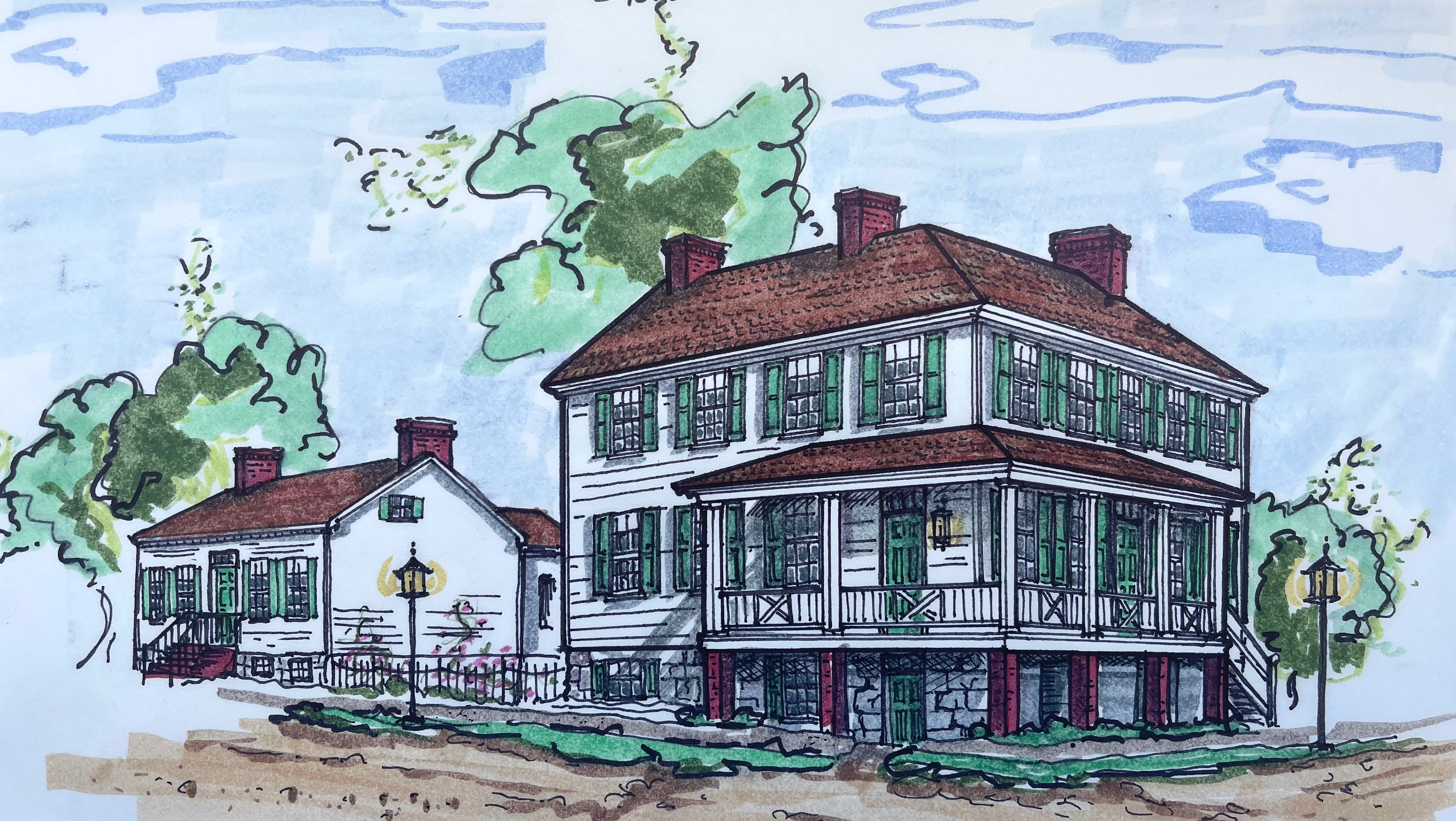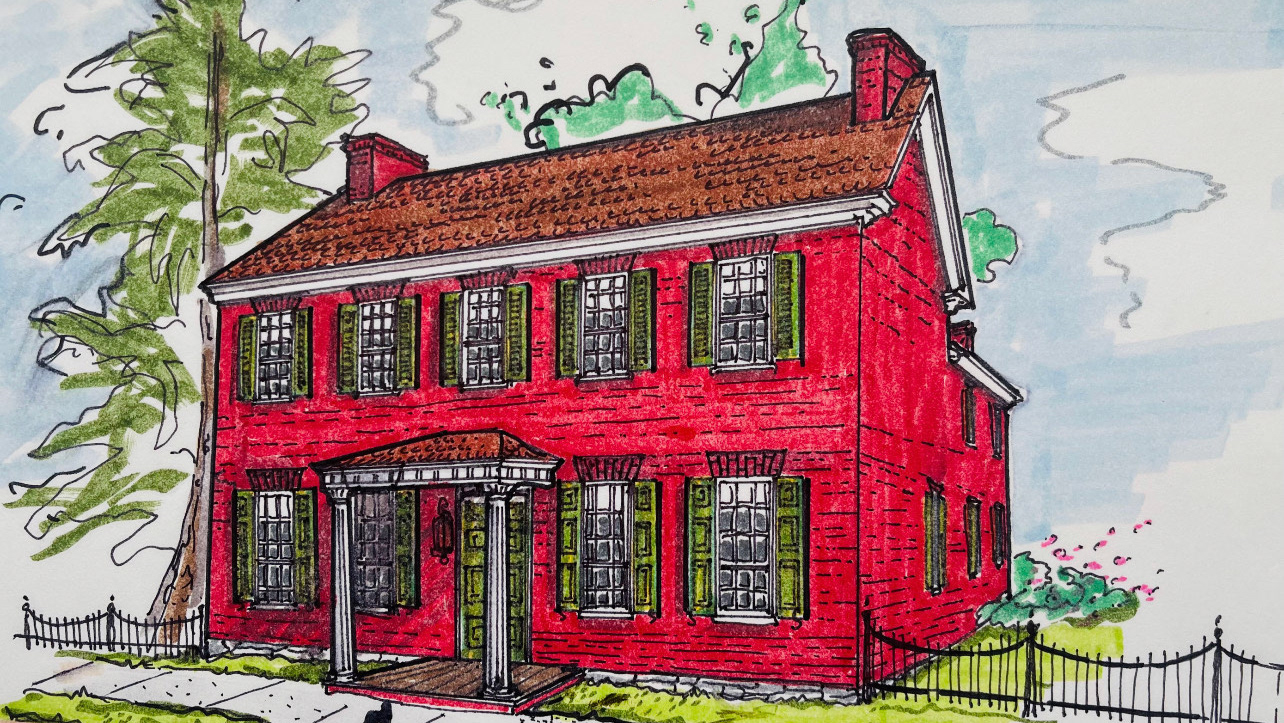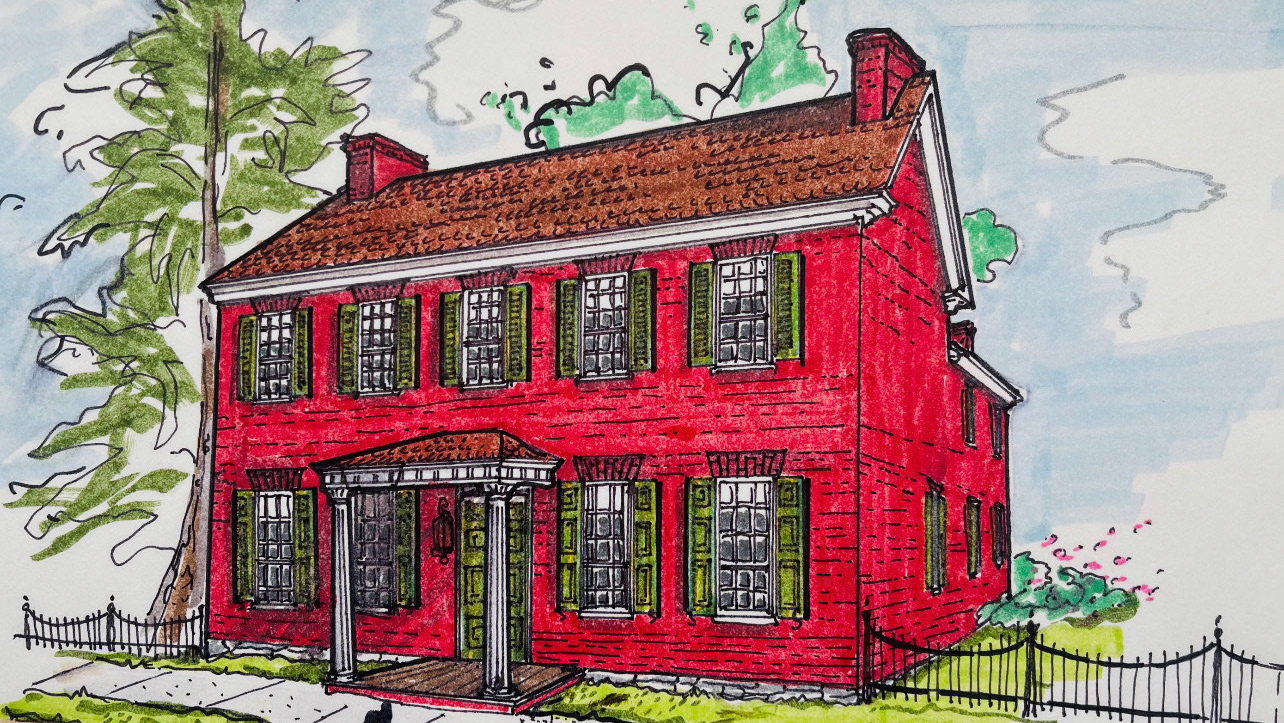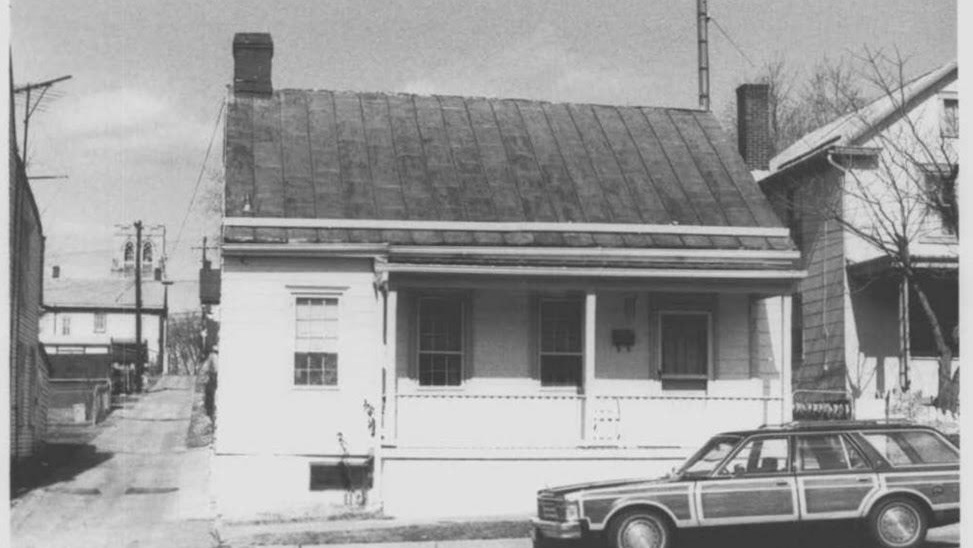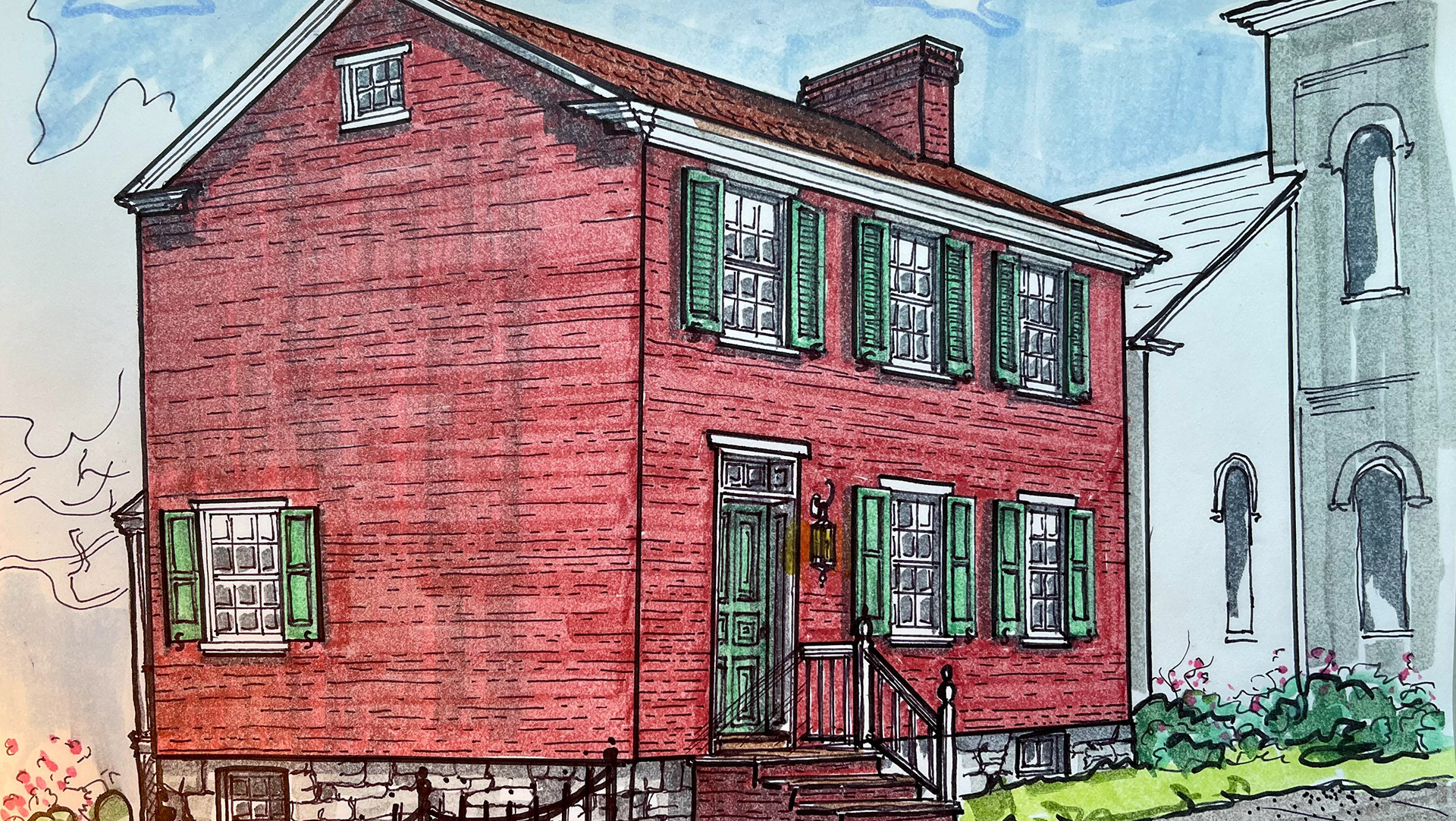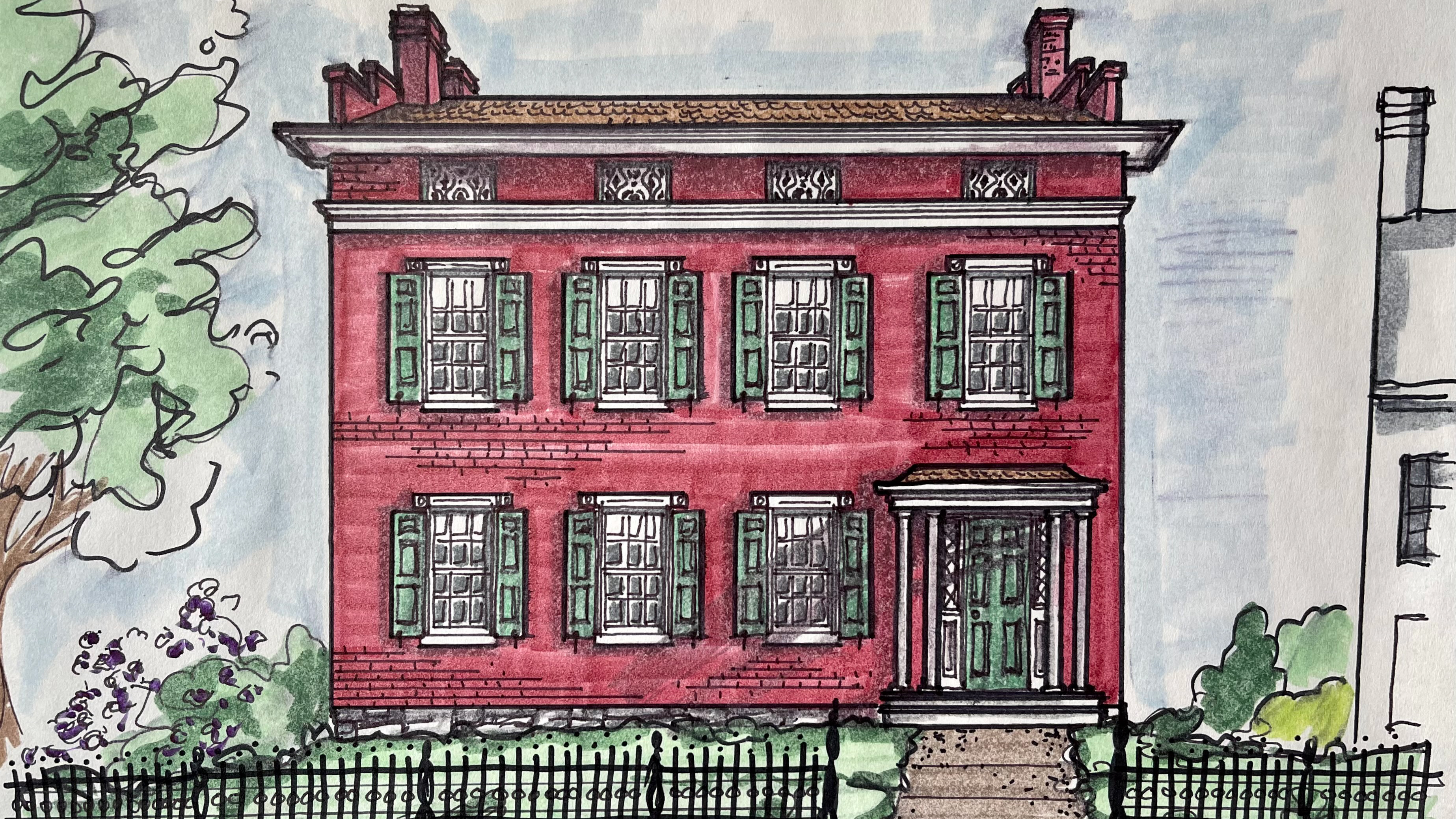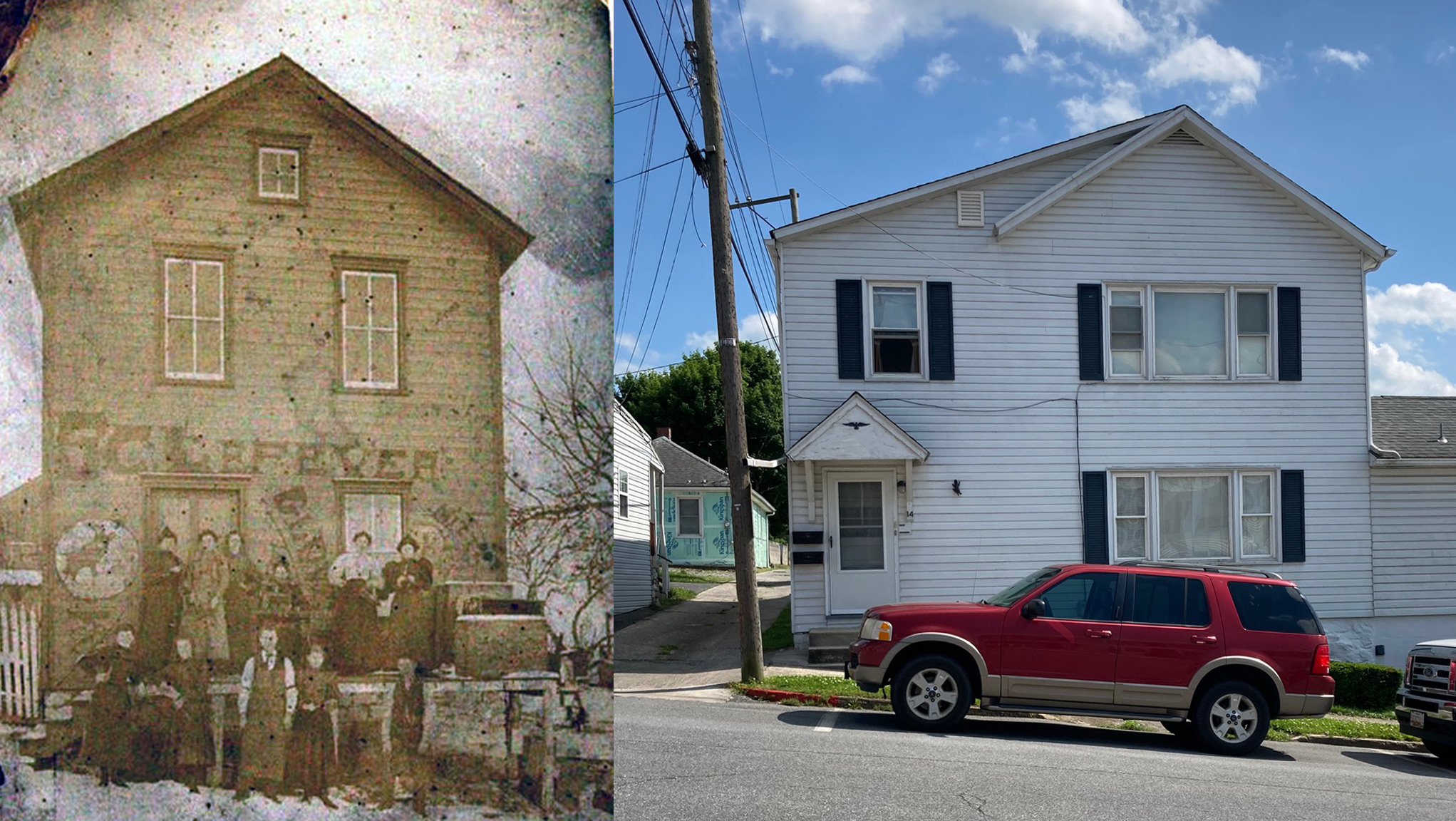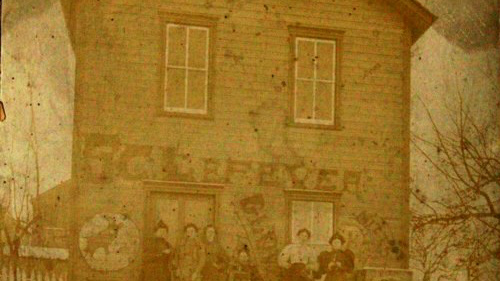At the corner of Vermont and W. Potomac Streets fronting the latter sat a Germanic Double "Penn Plan" log home with a Pent Roof spanning the front covering the lower level openings. Two front doors next to each other followed the ancient German tradition often found in the Pennsylvania Dutch regions surrounding Lancaster and York. The house sat on original lot 9 of the plan of Williamsport fronting West Potomac.
Truncated Pent Roof in Funkstown, one of, if not the only surviving examples in Washington County.
First leased by Patrick Campbell of Pennsylvania in 1790, Campbell failed to fulfill his lease obligation to build a house within three years. Lot #9 was subsequently contracted to Jacob Towson (1763-1844) in 1797 with the original terms. As written in former posts, Jacob Towson was one of Williamsport's earliest developers, ultimately making a large fortune from his over four decades of real estate and business dealings. Lot 9, a highly desirable lot along the town's main thoroughfare to the river, was among the first lots Towson leased.
Jacob consistently met his lease terms obligations and immediately began constructing a house 1797/8. As this was one of his earliest real estate acquisitions in the town, there is a strong likelihood that this was his first residence. In 1805 Jacob subleased the property to the widow Catherine Heffley Stover (1781-1860).
Catherine was born in Washington County in 1781 and married Michael Stover around 1800. After only a few years of marriage, Michael died, leaving Catherine a very young widow. She leased the house at 110 W. Potomac from Jacob Towson and a short time later married Dutchman Henry Betterbenner. The couple lived in Williamsport for several years, later moving to Boonsboro, where they raised a family of five children. Catherine passed in 1860 at the age of 79.
The house and lot were purchased by the wealthy Van Lear family who owned almost the entire south side of W. Potomac street, stretching from Conococheague Street to the Potomac River. Ultimately, the property was devised to Sophia Findlay (1804-1881), daughter of one of Williamsport's founding members Matthew Van Lear, owner of Mount Tammany east of town. She was the daughter-in-law of Pennsylvania Governor William Findlay.
For many years the home was leased to various tenants, later sold to William S. Hurd and his wife Samuella Spears of Kentucky. William was the son of George and Annie Hurd. The Hurd's owned numerous properties in Williamsport and were the proprietors of Hurd's Drugs on the southeast corner of Conococheague and Potomac Streets. They were active, well-respected community members, George serving as town mayor from 1916-1918.
William Hurd and his first wife Laura E. Snyder 1913.
William Hurd was a very handsome young man and, as the son of George and Annie Hurd, was considered an heir to wealth. In a time when divorce was taboo for polite society, Willam married four times,1913 Edyth McGinley (divorced), 1917 Dorothy Bultmann (divorced), 1928 Sameulla Spears (divorced), and finally, Catherine Cox in 1945. William's finances dwindled with each marriage, and he repeatedly mortgaged the properties he had inherited from his parents.
A brick apartment building was erected in the other half of lot 9 at the corner of Vermont and W. Potomac, used as apartments by the Hurds. The old log house remained on the property and in the hands of the Hurd family until 1977, when Richard Bikle purchased it. About 1980, the owner had the historic, nearly 200-year-old structure demolished for yet another parking space for the apartment building. This demolition struck yet another blow to the historic fabric of this town. Since 1980, Williamsport has lost over 50 of its 410 listed historic structures, almost 15%.
Williamsport's architectural heritage is now more important than ever as we surge towards a revitalization. Our history is important and should be protected.
